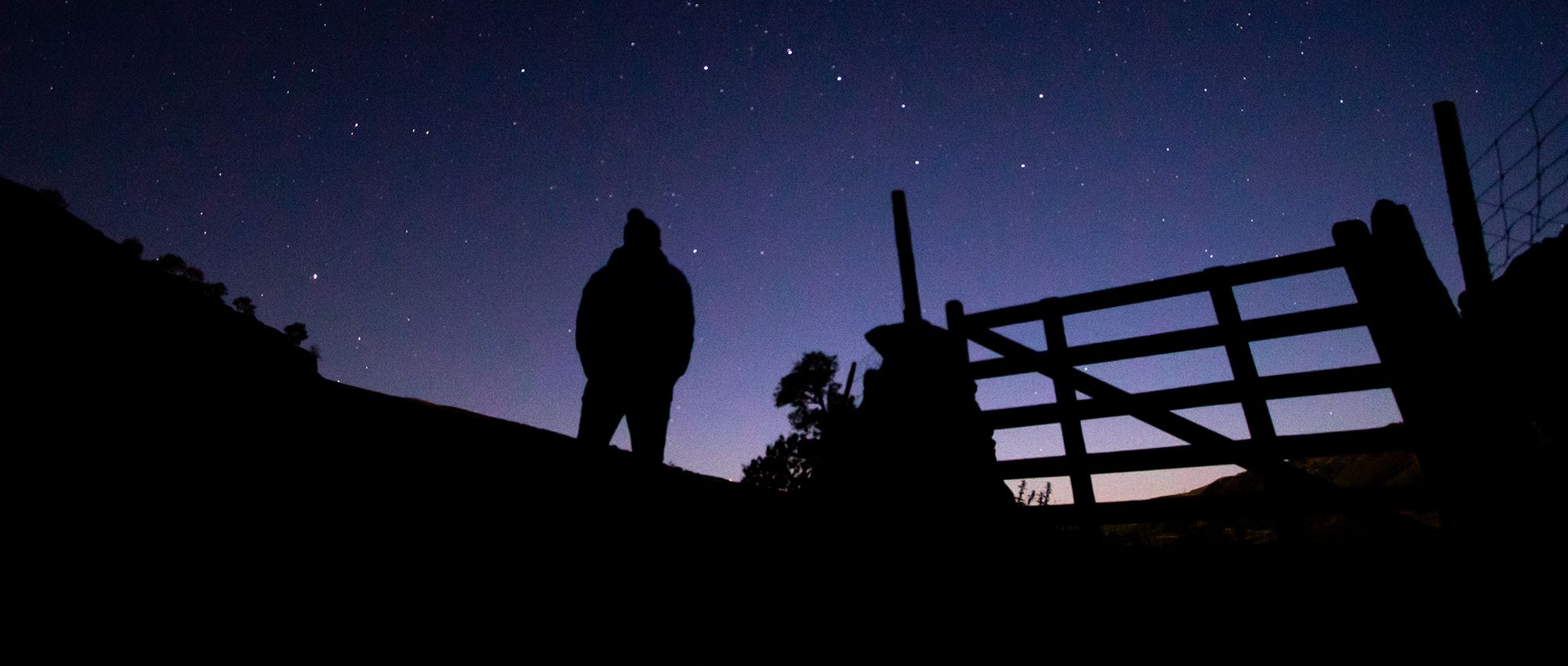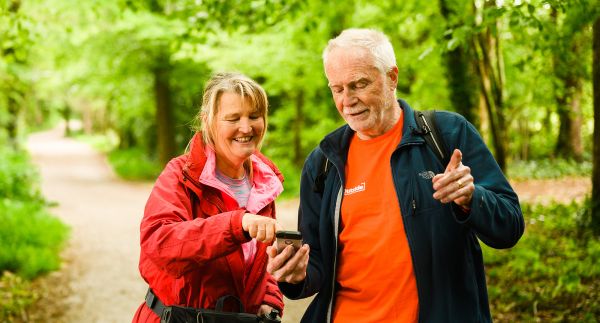5 top tips on night navigation for beginners
How to stay safe and enjoy walking at night.

Walking at night can be an incredibly rich and rewarding experience. It offers you the chance to spot shooting stars, hear hooting owls and to feel like the only person under the moon. But navigating at night requires extra skills. Here are our top tips for fun and safe night navigation.
1. Gradually develop your skills
Whether you want to walk a local low-level route or whether you aspire to head up a mountain at night, you should ensure you have the necessary knowledge and skills to navigate your chosen terrain in the daytime before you dive into the amazing world of night navigation.
It sounds simple, but if you’re not confident navigating in poor visibility in the daytime, then navigating at night could prove difficult. Micro navigation skills that you use in low visibility are even more essential at night, so honing these in the daytime will serve you well.
Learning night navigation in the warmer months is more pleasant than in the middle of winter. You might have to stay up later for it to get dark, but it’ll be warmer and less chance of bad weather.
2. Pick a familiar place
You don’t have to be in the middle of nowhere to develop your night navigation skills. It’s amazing how doing any route at night transforms it into a completely different adventure.
Building your skills and confidence in an area you are familiar is a good way to start. You’ll be surprised how little distance you cover at night when doing micro navigation, so a small practice area such as a large park will be a suitable and safe learning environment. If you’re worried about safety, then invite some friends to join you.
Practising your compass skills, timing and pacing combined with all the strategies that go with them will give you a greater awareness as you develop as a navigator. In a familiar location making mistakes and learning from them won’t be as uncomfortable an experience as choosing a location you are not familiar with.
3. Get comfortable with your equipment
Having suitable kit that is up to the job is a good first step for getting into night navigation. A map in a waterproof case, a compass, a digital watch and a reliable headtorch are a good start. Pack a spare headtorch instead of spare batteries. It’s easier to swap headtorches than to change batteries in the dark. Learn how to use your kit before you head out in the dark.
It’s very hard to find a lost glove, compass or your map in the dark so attaching your gear to you will stop you dropping it or it blowing away. Use mini karabiners to clip your compass and map case to your outer layer. That way you can easily reattach them when you change layers.
Pack some extra layers. At night it usually gets colder. Combine that with a slower pace and stopping for navigational decisions and you’ll be glad of a few extra layers in your bag. If you’re going to be wearing gloves, make sure you can still use your compass and other gear. Lastly, knowing where your gear and clothing is packed will make things quicker and easier for you. Have a system and stick to it.
Carrying your night navigation equipment in your bag whenever you go out walking will help you be a confident and self-sufficient walker if things don’t go to plan and you find yourself navigating in fading light.
4. Get help with your first steps
There are many great night navigation courses available from taster sessions to Mountain Training qualifications. Coaching from an experienced, qualified professional will really kick start your skills and give you the confidence to give it a go.
You may know someone who can start you on your night navigation journey or perhaps joining your local Ramblers group will bring together likeminded people who’d like to give night navigation a go.
If you’re heading out on your own it’s especially important to have a reliable emergency contact. Let them know where you’re going, when you’ll be back and that you’ll check in with them once you return from your walk. Carry their details on an In Case of Emergency (I.C.E) card and remember to let them know how to get help if you don’t check back in when expected.
5. Enjoy it
Walking at night can be an amazing adventure. Whether night navigating alone, with friends or on a training course there is nothing like the experience of turning off your headtorch and experiencing the night time quiet under the stars.
Once you’ve put in the work to sharpen your night navigation skills, you’ll be an even more self-sufficient and responsible walker.
It’s an amazing skill to have, enjoy it.
.jpg?itok=MDxmT0ke)
Walking navigation devices Buyer’s Guide
When striding out on less well-trodden routes, a navigation device can be a useful partner. Here’s our guide to buying one that’s right for you.

What is GPS and do I need it?
Technology can help us navigate when out walking. GPS systems and apps can be helpful so long as we know how to use them and understand their limitations.

Planning a walking route
Choosing the location and distance are just two important aspects of planning a walking route. Here is our guide to a well-planned walk.